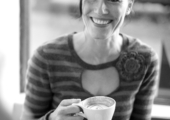Wellbeing at Work Summit Middle East 2026,
Cairo, Riyadh, Muscat and Dubai
20 January 2026
More information
A new role for technologies in workplace change,
Online
21 January 2026
More information
BCO East Anglia Research Report Event: Redefining the Market – Beyond Grade A,
Cambridge
22 January 2026
More information
BCO South West Research Report Event: Redefining The Market – Beyond Grade A,
Bristol
26 January 2026
More information
Space Plus,
London
27 January 2026
More information
Space UK,
London
28 January 2026
More information
High-Tech, Low-Touch: Why The Future of Workplace Experience Isn’t on a Screen,
Online
29 January 2026
More information
Top Cultural risks impacting wellbeing and performance of the Indian Workplace,
Online
18 February 2026
More information
Featured
-

The new issue of Works magazine is available for you now
-

The role of local businesses in promoting mental health and wellbeing
-

A new study suggests that GenAI really is addling your brain
-

Life at the coalface: How the agile workplace first appeared in the mid 20th Century
-

Global survey points to ongoing yearning for flexible work
-

Beyond compliance: how the EU Accessibility Act will redefine workplace inclusion
-

UK employers are missing out on AI productivity gains because of gaps in talent strategy







May 6, 2013
Office design goes to the movies. Part 9: BladeRunner
by Mark Eltringham • Comment, Workplace design
[embedplusvideo height=”146″ width=”210″ standard=”https://www.youtube.com/v/yWPyRSURYFQ?fs=1″ vars=”ytid=yWPyRSURYFQ&width=210&height=146&start=&stop=132&rs=w&hd=0&autoplay=0&react=1&chapters=¬es=” id=”ep3143″ /]
Ridley Scott was one of the pioneers of a film aesthetic that mashes the past with the future, the grime and the gleam. It was a pioneering idea at the time but it’s familiar now. We now accept that the future looks a lot like the past and that goes for the office design in this scene. BladeRunner is also a film about dreams. The dreamy setting here is a telling contrast to the dirt and sleaze in the City below and the scene in the office in which Deckard (Harrison Ford) interviews the classic femme fatale Rachel (Sean Young) also supports the unresolved notion that Deckard may be a replicant himself. Clearly the workplace smoking ban had been repealed by this time, but then where would a femme fatale be without a cigarette? Even if she is an android.